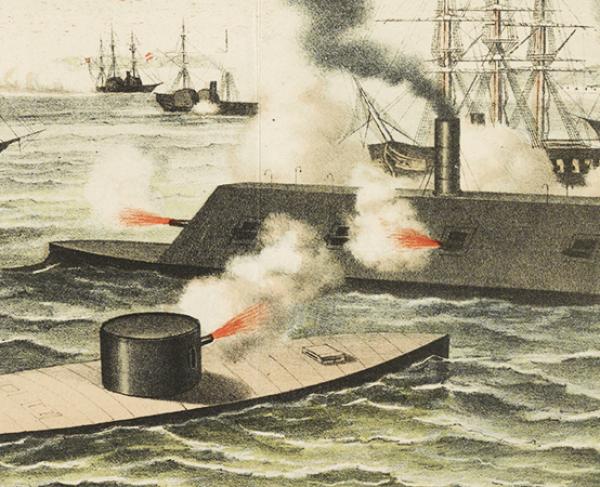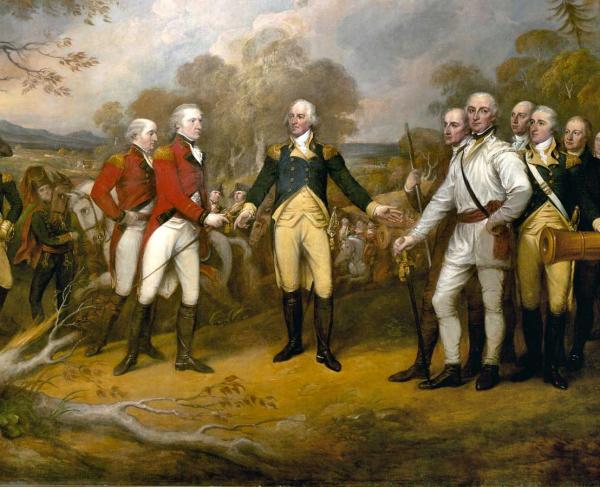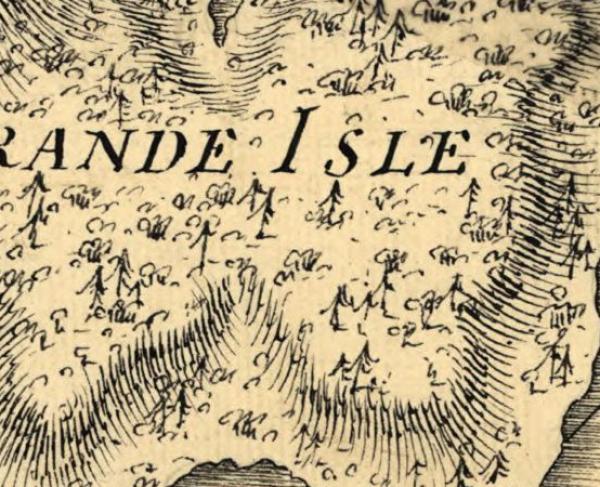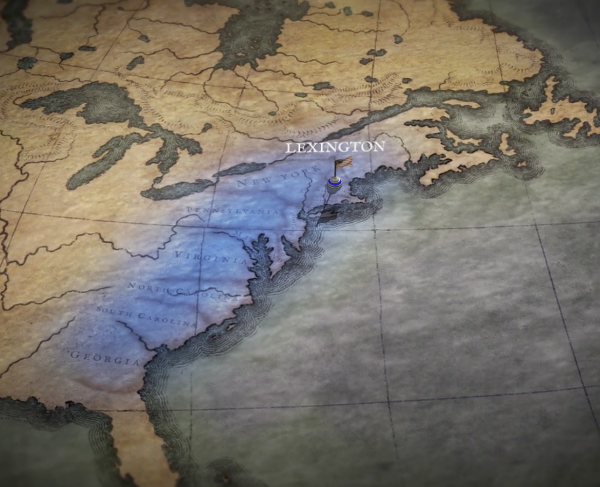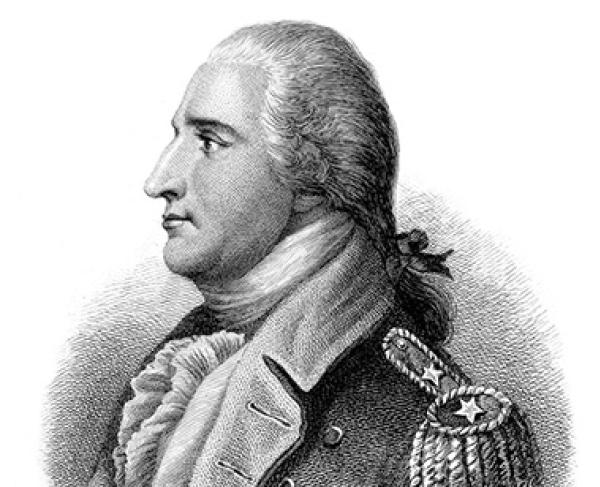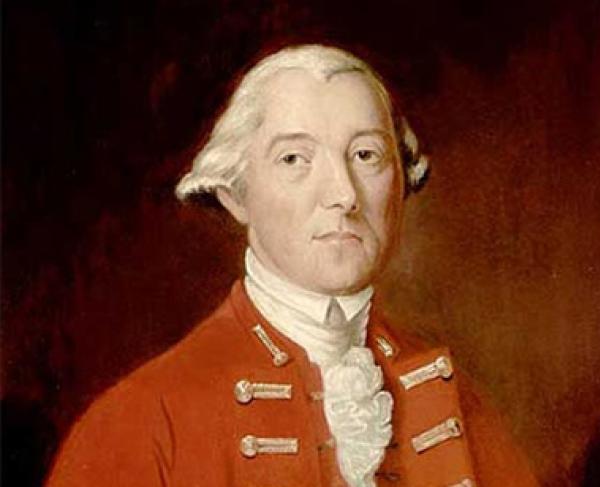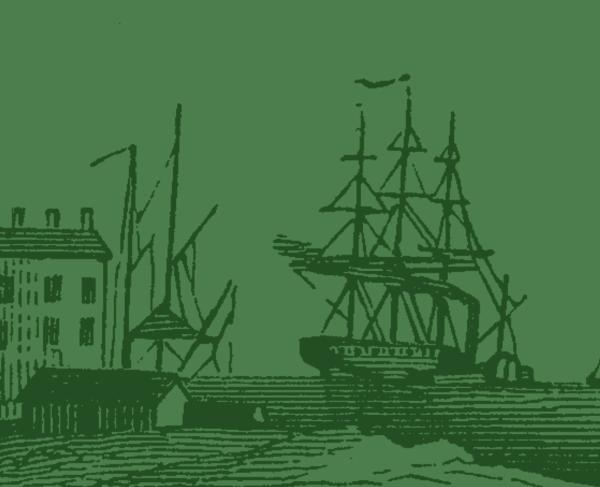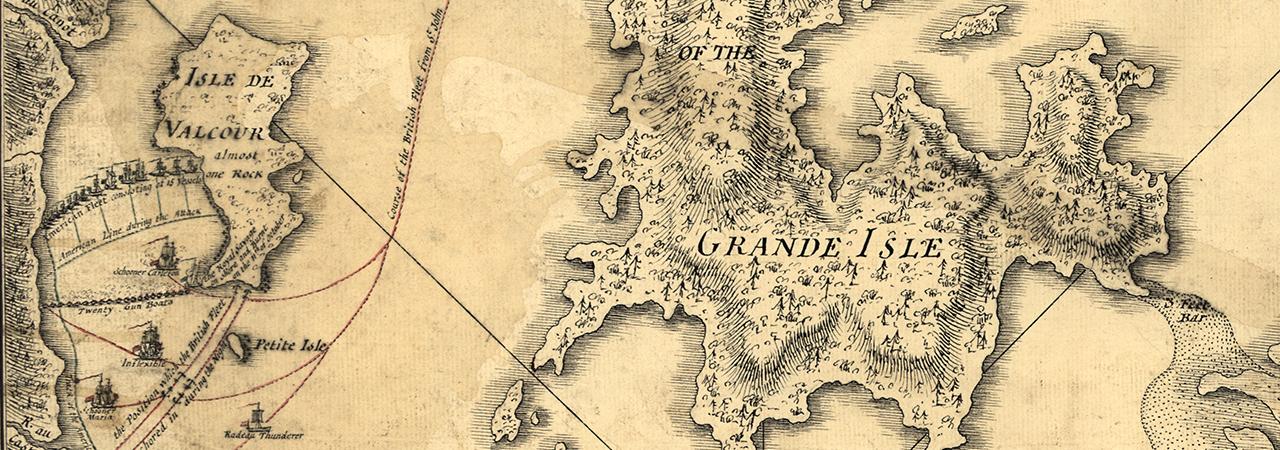
Valcour Island
Valcour Bay
New York | Oct 11, 1776
The naval Battle of Valcour Island, also known as the Battle of Valcour Bay, took place on October 11, 1776, on Lake Champlain. The main action took place in Valcour Bay, a narrow strait between the New York mainland and Valcour Island. The battle is generally regarded as one of the first naval battles of the American Revolutionary War, and one of the first fought by the United States Navy. Most of the ships in the American fleet under the command of Benedict Arnold were captured or destroyed by a British force under the overall direction of General Guy Carleton. Despite losing 11 ships and nearly 200 sailors to capture or casualty, the American defense of Lake Champlain stalled British plans to reach the upper Hudson River valley.
Carleton's fleet, commanded by Captain Thomas Pringle and including 50 unarmed support vessels, sailed into Lake Champlain on October 9. On the 11th, after two days of sailing south in search of Arnold’s fleet, the British ships passed the northern tip of Valcour Island where Arnold had positioned his ships in a line. Arnold sent out the Congress and the Royal Savage to draw the attention of the British. However, after several exchanges of fire, both American crews were forced to abandon their vessels after running aground and being swarmed by British warships.
The British gunboats and warships then maneuvered within range of the main American line. Though struggling against a stiff headwind, the British fleet was successful in positioning most of its ships in a line of battle against Arnold around 12:30 pm. Both fleets exchanged heavy volleys of cannon fire with several ships on both sides taking serious damage. Arnold’s Revenge was heavily hit and the Philadelphia was also damaged and eventually sank around 6:30 pm that afternoon. A British sloop, the Carleton, whose guns wrought havoc against the smaller American boats, became the focus of American attention. Enduring a withering cannonade, the Carleton’s casualties were relatively significant – taking sixteen total casualties – and she was also heavily damaged.
As darkness approached, the British 22-gun Inflexible finally reached the action. The largest of the ships to engage in the battle, she quickly silenced most of Arnold's fleet, and sent the rest sailing for cover. The British also began landing Native American auxiliaries on both Valcour Island and the lakeshore, in order to deny the Americans the possibility of retreating to land. As darkness fell, the American fleet retreated, and the British called off the attack, in part because some boats had run out of ammunition.
With darkness came the realization that most of the American ships were damaged or sinking and the crews reported around 60 casualties, whereas the British reported around 40 casualties on their ships. Knowing that he had no chance of defeating the powerful British fleet, Arnold decided to abandon the fight under the cover of night for Fort Crown Point 35 miles away. On the moonless foggy night, Arnold’s fleet threaded its way through a gap about one mile wide between the British ships and Valcour Island, and by morning, they had slipped away. General Carleton, upset that the Americans had escaped him, immediately sent his fleet around Valcour Island to find them.
Adverse winds as well as damaged and leaky boats slowed the American fleet's progress. Eventually the British vessels located and gave chase to the struggling American for the next two days. Along their escape route, many of Arnold’s ships were purposefully run aground and burned rather than falling into the surging British. The Washington however, too slow to make it for land where her crew could make their escape, was forced to surrender to the faster British ships.
Arnold then led the remaining smaller craft into a small bay on the Vermont shore which was far too shallow for the larger British ships to give chase. These boats were run aground, stripped, and set on fire, with their flags still flying. Arnold, the last to run his ship aground, personally torched his flagship Congress. The surviving ships' crews, numbering about 200, then made their way overland to Fort Crown Point. Upon reaching their destination, they were pleasantly surprised to see four surviving American ships which had, unbeknownst to them, escaped the British fleet shortly after the battle began on the 11th.
Despite this consolation, Arnold knew control of the lake was firmly in British hands, and he ordered the destruction of the fort before retreating Ticonderoga. With winter settling in, Carleton opted not to push further down into the upper Hudson against for Ticonderoga, and thus, his goal of stalling the British expedition had ultimately succeeded despite the drubbing his fleet took at Valcour Island.
Valcour Island: Featured Resources
All battles of the Canadian Campaign
Related Battles
500
2,300
200
40

